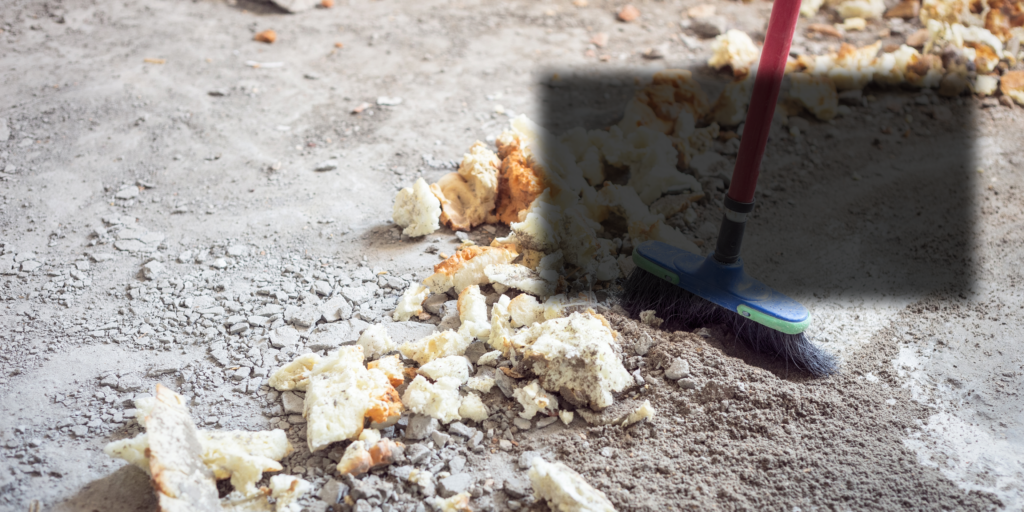It is time to start making preparations for the snow and ice that will arrive with winter as it is getting closer and closer. Winter, while it’s true that it can bring forth beautiful landscapes, also has the ability to wreak major damage to our outdoor surfaces if we aren’t careful with how we approach it. The following six recommendations will help you keep your parking lots and pathways safe and usable during the winter months. They will stay in top shape for the whole of the season if they do this. We will give you all the knowledge you need, from routinely shoveling snow to fixing potholes and cracks in the pavement.
Shovel Regularly
Winter storms can dump a significant amount of snow on our driveways and parking lots, turning them into slippery and treacherous paths. That’s why it’s crucial to shovel regularly throughout the winter season. By staying on top of the snow accumulation, you’ll not only prevent it from compacting and becoming harder to remove but also reduce the risk of accidents caused by icy surfaces.
Shoveling regularly may sound like a daunting task, but it doesn’t have to be! Just a few minutes each day can make a world of difference in maintaining safe conditions. Make sure you invest in a good quality snow shovel that suits your needs – whether it’s for clearing small walkways or larger areas.
When shoveling, start by creating clear paths along your driveway and parking lot edges before moving toward the center. This will help prevent any trapped snow from spilling back onto clean sections. Remember to take breaks as needed and use proper lifting techniques to avoid straining your muscles.
By taking the time to shovel regularly, you’re not only ensuring safe passage for yourself but also for visitors, customers, or anyone else who might be using your outdoor spaces during winter months. So grab that trusty shovel and keep those pathways clear all season long!
Use Salt or Ice Melt
During the winter months, one of the biggest challenges for driveways and parking lots is dealing with ice and snow. Luckily, there are effective solutions available to help combat these hazardous conditions. One such solution is using salt or ice melt.
Salt and ice melt products work by lowering the freezing point of water, which helps to prevent ice from forming on surfaces. When applied correctly, they can quickly dissolve existing ice and snow, making it easier to remove with a shovel or plow.
To use salt or ice melt effectively, start by choosing the right product for your specific needs. There are various types available, including rock salt, calcium chloride, and magnesium chloride. Each has its own advantages and recommended usage guidelines.
Next, apply the salt or ice melt evenly across your driveway or parking lot. Be sure not to overuse it as excessive application may damage concrete surfaces over time. Follow the manufacturer’s instructions regarding dosage rates and application methods.
Remember that while salt can be effective at melting snow and preventing icy patches from forming, it does have some drawbacks. It can be harmful to vegetation and pets if ingested in large quantities. Additionally,salt residue left behind after melting can contribute to the corrosion of metal surfaces like cars.
Keep the Area Clear of Debris
One important aspect of winter preparation for driveways and parking lots is keeping the area clear of debris. It may not seem like a big deal, but debris can pose a serious hazard when it comes to snow removal and overall safety.
When snow falls, it can quickly accumulate on top of any debris that might be lying around. This makes it much more difficult to effectively shovel or plow the area. Not only does this slow down the snow removal process, but it also increases the risk of accidents and injuries.
Leaves, twigs, branches, and other types of debris can also create uneven surfaces on your driveway or parking lot. When covered in snow or ice, these hidden obstacles become even more treacherous. They can cause slips and falls for pedestrians as well as damage to vehicles driving over them.
To keep the area clear of debris during winter months, make sure to regularly sweep or blow away any leaves or loose objects before a snowfall occurs. Furthermore, any major debris, such as a fallen branch or garbage, should be cleared away before it is buried by snow.
Maintaining a clean driveway or parking lot in the winter allows snow to be removed more quickly and creates a safer environment for pedestrians and drivers.

Inspect for Damage
Parking lots and driveways can sustain damage from winter weather, so it’s critical to do routine inspections to look for damage. Start by inspecting the area for any cracks or potholes that might have developed throughout the winter. These could pose a risk to anyone strolling through your property in addition to cars.
Next, see how your pavement is holding up. Keep an eye out for any indications of deterioration, such as uneven surfaces or fading color. These problems must be addressed right away to prevent them from getting worse and becoming more expensive to fix.
Don’t forget about drainage systems either! Ensure that gutters and drains are clear from debris like leaves and twigs, as clogged drains can lead to water pooling on your pavement which can eventually cause damage.
Examine the edges of your driveway or parking lot. Are there any loose stones or bricks? Fixing these small issues early on will help prevent bigger problems down the road.
Regular inspections are key in maintaining a safe and functional driveway or parking lot throughout the winter season. By addressing any damage promptly, you’ll ensure that both vehicles and pedestrians stay protected while navigating through your property
Seal Cracks and Potholes
When it comes to winter preparation for your driveways and parking lots, one crucial step is sealing any cracks or potholes. These imperfections may seem insignificant at first, but the freezing temperatures can cause them to expand and worsen over time.
To start, inspect the surface carefully for any visible cracks or potholes. Look out for small hairline fractures that could potentially grow larger when exposed to ice and snow. Once you’ve identified these problem areas, it’s time to take action.
Invest in a high-quality crack sealant that is specifically designed for cold weather conditions. This will help prevent moisture from seeping into the cracks and causing further damage during freeze-thaw cycles. Make sure to clean the surface thoroughly before applying the sealant to ensure proper adhesion.
For larger potholes, consider using a patching compound instead. Fill the hole with the compound and use a tamper or shovel handle to compact it down firmly. Remember to follow all manufacturer instructions carefully for best results.
By sealing cracks and fixing potholes before winter arrives, you’re not only improving the appearance of your driveway or parking lot but also extending its lifespan. Don’t wait until spring when repairs can become more costly and time-consuming! Take proactive measures now to protect your investment throughout the winter season
Remove Snow from Vehicles
Winter brings with it snowfall, which means we need to be prepared not only for clearing our driveways and parking lots but also for removing the snow from our vehicles. If you skip this crucial step, you may face a number of problems. During the winter months, here are some suggestions for efficiently clearing snow from your automobiles.
Keep a high-quality ice scraper or brush in your car at all times. You may use this to quickly and easily clear your windows and windshield of any snow or ice before setting out on your trip. The safety of you and other drivers depends on your ability to see the road clearly at all times.
Keep in mind that you should also clean the top of your car. When driving, snow that has been left on the roof can easily slide down into the windshield, obscuring your visibility and perhaps causing accidents if it falls onto vehicles behind you.
Carefully clear the snow away from your car’s exterior with a brush or scraper. Don’t scratch or otherwise harm the paint by using too much force.
Don’t forget to remove debris from the wheel wells and the areas immediately surrounding the tires. Certain areas may have decreased road traction and control due to snow accumulation.
Clearing snow from the regions surrounding your car’s lights, taillights, side mirrors, and license plates is also a good idea. Both you and the other vehicles on the road will have improved visibility if you do this.
A tiny shovel is something you should think about keeping in your trunk in case you get stuck in the snow and have to dig yourself out of a tight spot.
These simple steps to remove snow from your car can increase the likelihood that you’ll have a safe winter’s driving experience.

